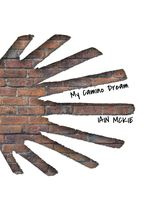First published in Great Britain in 2011 by Atlantic Books,
an imprint of Atlantic Books Ltd.
Copyright David McKie 2011
The moral right of David McKie to be identified as the author of this work has
been asserted by him in accordance with the Copyright,
Designs and Patents Acts of 1988.
All rights reserved. No part of this publication may be reproduced, stored in a
retrieval system, or transmitted in any form or by
any means, electronic, mechanical,
photocopying, recording, or otherwise, without the prior permission of both the
copyright owner and the above publisher of this book.
Every effort has been made to trace or contact all copyright holders. The publishers will be pleased to make good any omissions or rectify any mistakes brought to
their attention at the earliest opportunity.
Lines from Whats It All About by Michael Caine, published by Century.
Reprinted by permission of The Random House Group Ltd.
1 2 3 4 5 6 7 8 9
A CIP catalogue record for this book is available from the British Library.
ISBN: 978 184887 248 6
eBook ISBN: 978 085789 310 9
Designed in Bembo by Geoff Green Book Design, Cambridge
Printed in Great Britain by the MPG Books Group
Atlantic Books
An Imprint of Atlantic Books Ltd
Ormond House
2627 Boswell Street
London
WC1N 3JZ
www.atlantic-books.co.uk
PREFACE

G ARIBALDI, military and revolutionary hero, arrives in London and so enthuses the populace that Victoria becomes alarmed and her ministers persuade him to hurry back to Italy. The dreamily romantic Archibald, 13th Earl of Eglinton, sets out to recreate historic glories and succeeds in engineering one of the great nineteenth-century fiascos, which leaves thousands of those who flock to see it historically drenched and miserable. Mary Macarthur first mesmerizes and then liberates the oppressed chain-maker women of Cradley Heath. A civil servant in a blue double-breasted blazer called Scott-Piggott bestows an unexpected moment of fame on unprepossessing Trowell in Nottinghamshire. This is a book about people who through some two centuries excited, enthralled, intrigued, shocked or scandalized otherwise ordinary places and lit up the lives of those who lived there about men and women who became for a time, in Miltons phrase, the cynosure of neighbouring eyes; or in the formulation that Shakespeares Helena uses in Alls Well That Ends Well, bright paticular stars.
Some, like Garibaldi, were already famous. The story of his visit to Britain in 1864 has been told in many biographies, but to read the reports of local newspapermen coming fresh and excited from the ecstatic clamour that greeted him the Garibaldi sentiment as one of them called it gives it a new immediacy. Others slipped long ago into obscurity, like Mary Elizabeth Smith, the country girl who took on the fearsome might of the Ferrers dynasty in a trial for breach of promise of marriage in Westminster Hall. What became of her thereafter I cannot discover: yet the record of the proceedings, which I found on Google Books while looking for something else, still sizzles on the page.
Some of my people are good, almost to the point of saintliness, like Adelaide Anne Procter, a poet once second only to Tennyson in the esteem of Victorian England, now remembered, if at all, for having written the words for the song by Sir Arthur Sullivan sung in every middle-class parlour The Lost Chord. But my test for writing biography clearly differs from that of the Victorian moralist Samuel Smiles, who taught that the chief use of biography consists in the noble models of character in which it abounds. Some of my subjects are scoundrels, like Barnard Gregory, newspaper editor, ace dabbler in sleaze and reputed blackmailer, whose eventual public humiliation delighted Dickens and whose more salubrious second career as an actor was ruined by the fall-out from his first.
Still others mix the admirable with the deplorable. Ralph Ward Jackson created a prosperous town but, failing to impose his imperious will on a priest and a congregation, was ready to wall them up in their church. Philip Heseltine, refurbished as Peter Warlock, briefly installed at Eynsford, Kent, composed his gentle and sensitive song cycle, The Curlew, but set net curtains twitching and tongues affrontedly wagging by the roistering life he led there with his equally unbuttoned friends. He has not, as I discovered, been entirely forgiven yet.
Many of this contingent seemed to me to fall into a category that falls short of justifying a full-scale book but deserves rather more than the limited space that the Oxford Dictionary of National Biography can provide. Theres a persistent story that the 2004 edition of the ODNB contains a hoax entry. A friend sent me its account of Dame Lucy Houston and said this must surely be it but read the accounts of her life by her besotted admirers or the incendiary pieces she wrote for the weekly paper she owned and edited, and she comes out as even more wildly extraordinary than the ODNB makes her.
Houston is one of those who lit up the sky for a while but left little mark behind her. You can wander today through the spotless avenues of Shoreham Beach on the Sussex coast without discovering even the slightest trace of the joyous Bohemian world that flourished there in the days of Marie Loftus and Sidney Morgan. But William Gilpin, measuring up the River Wye to see how far it satisfied his demanding definitions of what deserved to be called picturesque, inspired a new kind of topographical tourism. Sydney Yates of Blackburn, hardly remembered now outside the town or even (to judge by the slightness of his commemoration in the pub where it all began) within it, set off the trend that brought professionalism into football by breaking the aristocratic monopoly on the FA cup.
Some of these stories are commemorated in writings that most readers might well never come across. But for the Shakesperean scholar Marvin Spevack and his publisher in Hildesheim, Germany, I would never have encountered the enchanting Henrietta, daughter of the tyrannical bibliomaniac Sir Thomas Phillipps, whose diaries he selected and edited in his book A Victorian Chronicle, available in far fewer libraries than it deserves to be. Ward Jacksons story is told in a book by the former town clerk of Hartlepool and published by Hartlepool corporation hardly the recipe for a bestseller, but the book is exemplary. The history of the Jezreelites of Gillingham and their tower is recorded in a book long out of print by the fine Kent historian P. G. Rogers, whom I discovered while researching for a previous book the tale of the crazed sect leader whose life and death he described in Battle in Bossenden Wood: The Strange Story of Sir William Courtenay.
Much else has been dug out of libraries, especially the London Library and the British Librarys newspaper base at Colindale, and the Guildhall library, London and also from that glorious boon for writers of this kind of history, Google Books. The Medway Archives at Strood, the Wiltshire and Swindon History Centre at Chippenham were especially helpful. Eton College Library kindly invited me in to read past issues of their College Chronicle. Comparisons between monetary values of former times and those of 2010 are based on the National Archives on-line currency converter. Among other conspicuous benefactors, Jim Muir and Jim Miller introduced me to Kilwinning, Victor Keegan illuminated a visit to the Wye Valley, Mark Whyman and David Walsh showed me around the territory described in the chapter on Boosbeck, Cleveland and Audrey Gillan took me on an instructive tour of Spitalfields. June Wyndham Davies, now living in retirement in Spain, sent me a long and generous account of her happy and hectic days in the poor doomed theatre in Horsham.












